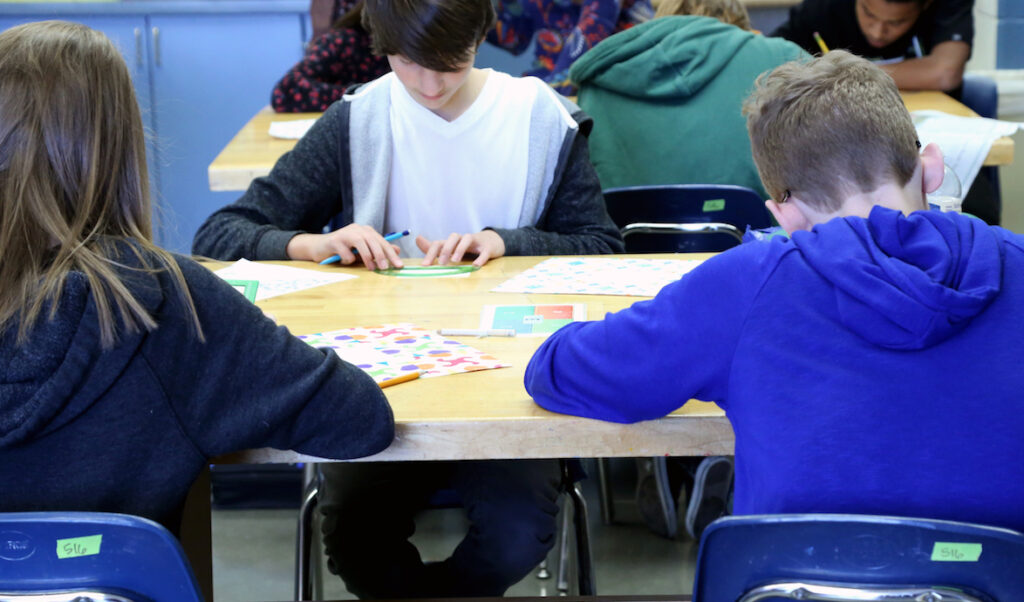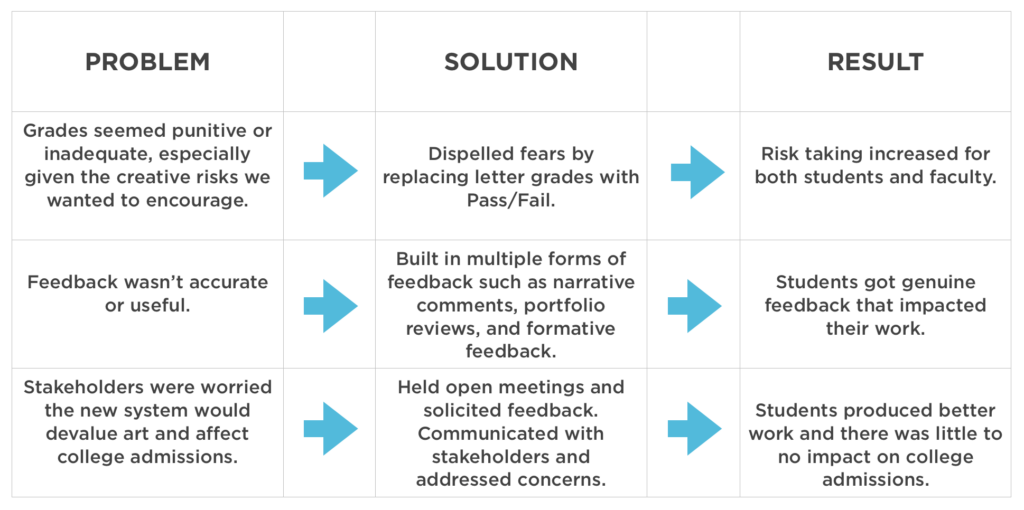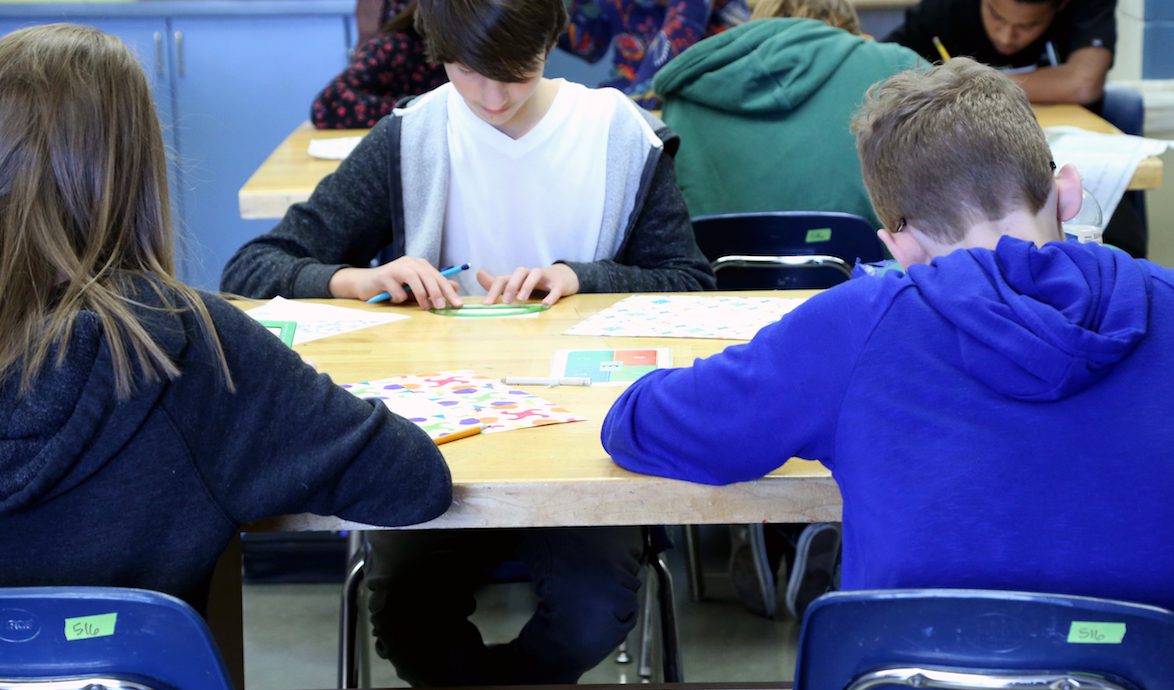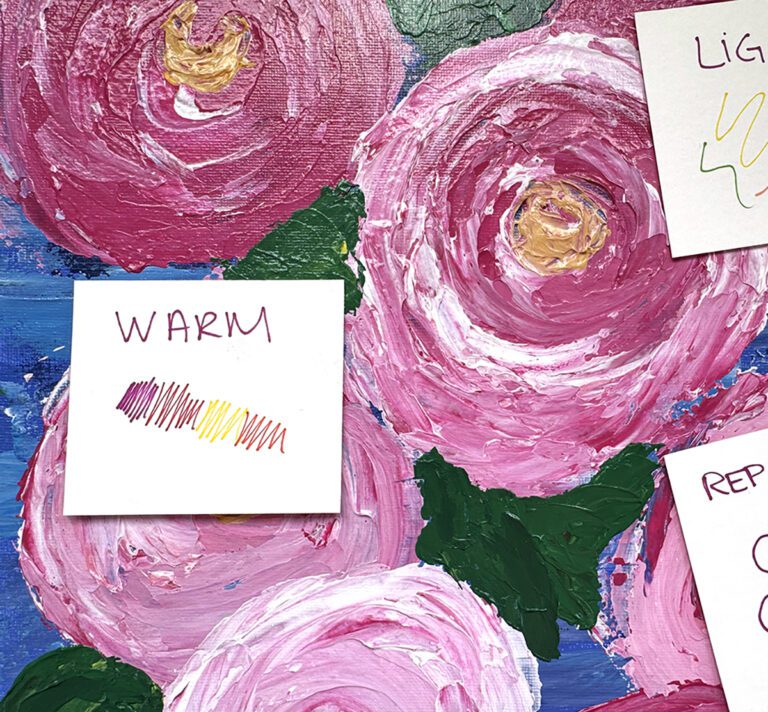It’s no secret many people don’t think of the fine arts as real academic subject areas. As art teachers, we know this isn’t true. The skills taught in our classes are every bit as important as those taught in math or science. Where the difference does come in, however, is grading. It can be limiting and awkward to conform our classes to the assessment models used in other academic areas.
Several years ago, my school shifted the high school classes to pass-fail and took on a new method of evaluation and assessment for our students.
This is the story of how that decision came about and the continuing legacy of that change.

Our Current Grading System
At our high school, students in the visual arts receive only one of two grades, Pass or Fail. This system is used for students in dance, drama, music, and visual art.
However, there is a considerable amount of additional feedback they receive beyond that description.
At the beginning of the semester, students are given a set of criteria or goals on which they will be evaluated. They receive feedback based on a scale of performance for each of these criteria.
Students also receive narrative comments on their report cards, portfolio reviews, and formative feedback.
The Grading Scale for Our Classes
- Exceeds Expectations (E)
Students who exceed expectations have gone beyond the required level of mastery and have demonstrated a high level of motivation and excellence. - Mastered Requirements (M)
Students who have generally mastered the requirements of the criterion and can demonstrate proficiency in and understanding of the stated goal or concept. Occasional errors are acceptable and expected. - Working toward the goal (W)
Students who are clearly making progress and working toward the goal, but have not yet mastered the requirements of the criterion. - Not Meeting Expectations (N)
Students who are not meeting expectations and have demonstrated consistently poor progress toward mastering the requirements of the criterion.
We use a similar scale at the middle school level as well.

How We Got Here
In conversation with Ty Talbot, the Fine Arts Department Chair, we discussed the process and rationale that brought about the change to our current system. You can see what he had to say below.
“It happened right in the middle of the shift in grading policy to more formative assessment, clearer learning goals stated up front in classes, and decreased emphasis on so-called compliance grades. Around this time, Alfie Kohn also spoke at PNAIS about the deleterious effects of grades on student risk-taking and motivation.
A little bit of explaining needed to happen [with students and faculty]. But, once people understood our perspective, it was pretty smooth. The department was all-in.”
The new grading system was officially adopted in 2011. To date, the fine arts department is the only department with this assessment model in the high school.

Concerns
Devaluing Art Classes
Early on, there was a concern this shift would end up devaluing art classes as a whole. However, this approach ended up demonstrating the seriousness with which we take our students and their work.
The previous system did not reflect the nuances of the fine arts process or experience. So much of artmaking can’t be adequately assessed or summarized by a traditional letter grade. This new system of feedback supported student learning to a much greater degree.
College Admissions
There was additional concern about college admissions and the impact this grade shift would have on students. According to most college admissions reps, many colleges routinely drop fine art (and P.E.) grades entirely when they calculate GPAs.
Additionally, many other high schools across the country issue pass-fail grades and colleges are used to interpreting diverse styles of grade reporting. This change demonstrated the department’s integrity, striving to avoid the trap of grade inflation.
Results
The system has been in place for several years now, and we could not be happier with the results. Primarily, this new system has encouraged more experimentation and risk-taking from our high school students. It has released them from the concern of not getting things “right” and seeing their letter grade suffer.
In addition, students are now getting substantive feedback. This feedback comes from rubrics and self-assessment. Students grade themselves on the rubrics alongside the teacher input. It’s been well-received throughout the school, and there are no plans to revert the fine arts classes to the old system.
While it took some getting used to, the pass-fail system has changed grading for the better in our school!
What does grading look like at your school?
Do you believe fine arts classes should be assessed differently than other classes?
Magazine articles and podcasts are opinions of professional education contributors and do not necessarily represent the position of the Art of Education University (AOEU) or its academic offerings. Contributors use terms in the way they are most often talked about in the scope of their educational experiences.





